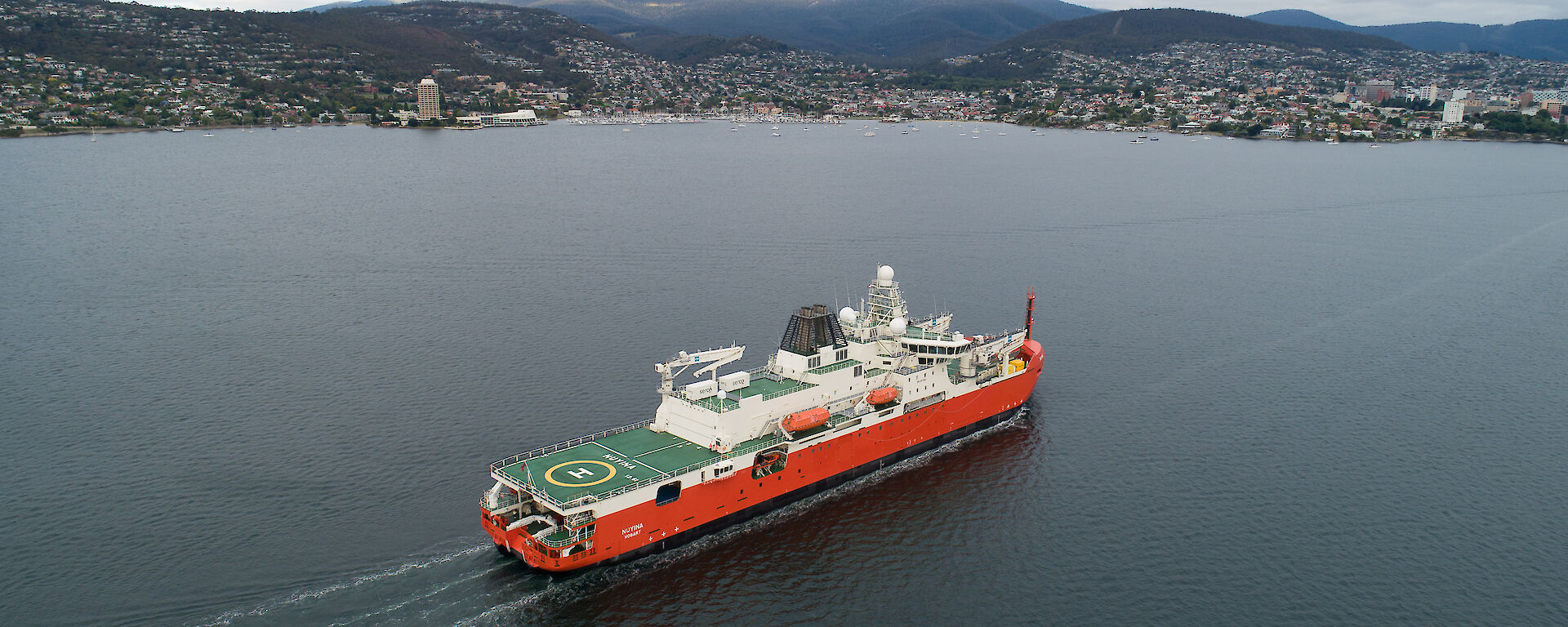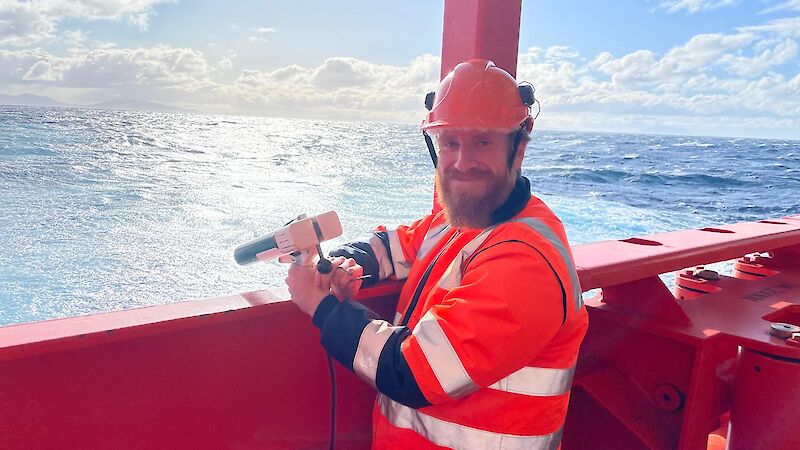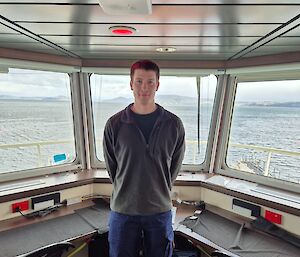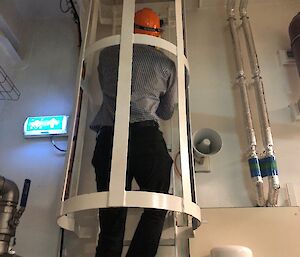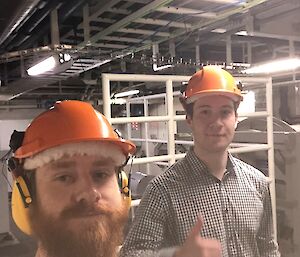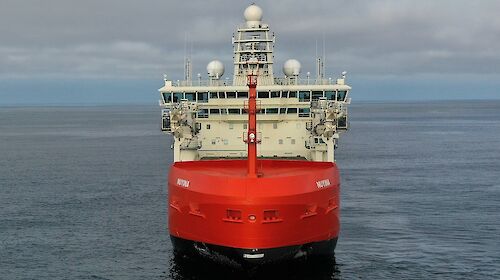Australian Antarctic Division Director of Science Systems Engineering, Lloyd Symons, facilitated the students’ experience, which included observing, and contributing to, the calibration and testing of the ship’s acoustic systems, deployment of acoustic and oceanographic instruments from the trawl deck, and mapping the seafloor.
The students were also required to complete an onboard task.
Liam, a mechanical engineering student, said he used onboard data to support fatigue analysis of the ship’s hull.
“The Nuyina is fitted with an advanced ice-loading system, and I explored the documentation to better understand its capabilities,” he said.
“Using the data collected during our voyage, I developed a program to perform mechanical fatigue analysis on the hull.
“This experience was an exciting opportunity to apply the theoretical principles I have learned throughout my degree and the practical skills from my Honours project in a real-world environment.”
Patrick, a computer science and electronic engineering student, with an interest in robotics and instrument design, coding and data, spent time on the trawl deck, as the scientists and crew deployed a range of instruments.
“I have always been interested in marine and Antarctic science, and this program has helped me experience what it will be like to work in the field as an electronic engineer,” he said.
“I helped mount a redirection cage on a trawl net to funnel items into the net.
“I also collected some data myself by deploying an XBT [expendable bathythermograph] off the back of the ship to measure temperature and depth.”
Patrick also processed chlorophyll data (a green pigment in algae) collected on the ship, mapped out its concentration along the ship’s path, and made the information available on the onboard Data in Real Time (DiRT) web service.
“Whilst I always wanted to go to Antarctica to work one day, this trip onboard the RSV Nuyina made me realise that the operations onboard may be even more exciting,” Patrick said.

